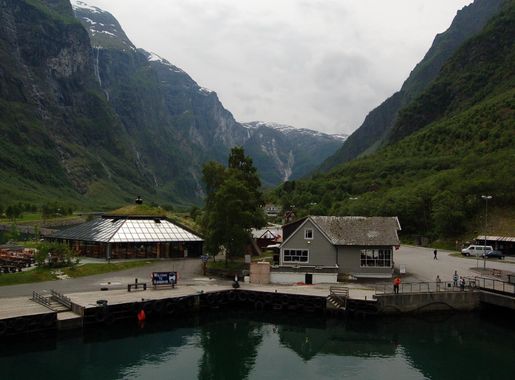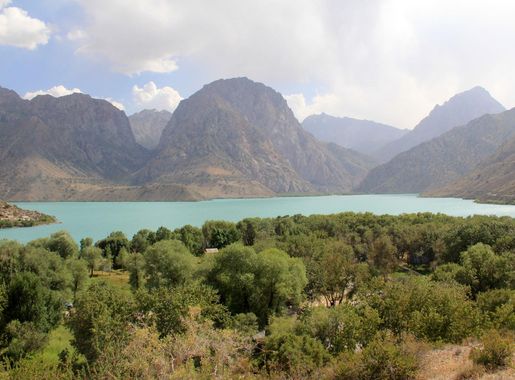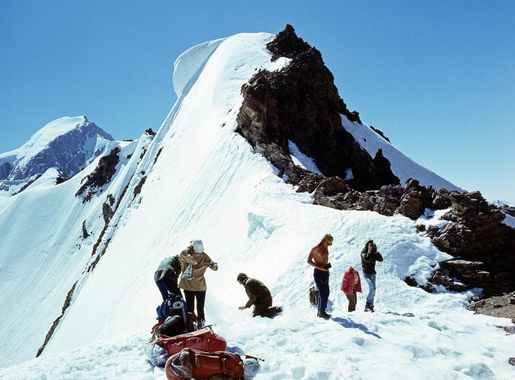
Yagnob Valley: A Hidden Gem in Tajikistan
Discover the untouched beauty and ancient culture of Yagnob Valley, a hidden gem in Tajikistan's Fann Mountains, perfect for hikers, nature lovers, and cultural enthusiasts.
Nestled in the heart of the Fann Mountains, the Yagnob Valley is a destination where time seems to have stood still. This remote and untouched valley is not just a place of natural beauty but also a living museum of ancient culture. The Yagnobi people, descendants of the Sogdians, have preserved their unique way of life and language for centuries. Visitors to the valley are often struck by the stunning landscapes, featuring high peaks, lush green meadows, and crystal-clear rivers. The valley is a paradise for hikers and nature lovers. There are numerous trails that take you through breathtaking scenery and offer a chance to observe the local wildlife. You may also come across ancient petroglyphs and ruins that tell the story of the region's rich history. The Yagnob River, which flows through the valley, provides opportunities for fishing and picnicking along its serene banks. One of the most rewarding aspects of visiting the Yagnob Valley is the opportunity to interact with the local people. The Yagnobi community is known for its warm hospitality. Staying in a local homestay will give you an authentic taste of their daily life. You can try traditional dishes, learn about their customs, and even pick up a few words of the Yagnobi language. The simplicity and charm of the Yagnob Valley make it a perfect getaway for those seeking peace and a connection with nature and history.
Local tips in Yagnob Valley
- Bring sturdy hiking boots. The terrain can be rugged, and good footwear is essential.
- Learn a few basic phrases in Yagnobi or Tajik to enhance your interaction with the locals.
- Pack layers of clothing. The weather can change quickly, and temperatures can drop at night.
- Respect local customs and traditions. The Yagnobi people are very proud of their heritage.
- Carry cash. There are no ATMs or card facilities in the valley.
Yagnob Valley: A Hidden Gem in Tajikistan
Nestled in the heart of the Fann Mountains, the Yagnob Valley is a destination where time seems to have stood still. This remote and untouched valley is not just a place of natural beauty but also a living museum of ancient culture. The Yagnobi people, descendants of the Sogdians, have preserved their unique way of life and language for centuries. Visitors to the valley are often struck by the stunning landscapes, featuring high peaks, lush green meadows, and crystal-clear rivers. The valley is a paradise for hikers and nature lovers. There are numerous trails that take you through breathtaking scenery and offer a chance to observe the local wildlife. You may also come across ancient petroglyphs and ruins that tell the story of the region's rich history. The Yagnob River, which flows through the valley, provides opportunities for fishing and picnicking along its serene banks. One of the most rewarding aspects of visiting the Yagnob Valley is the opportunity to interact with the local people. The Yagnobi community is known for its warm hospitality. Staying in a local homestay will give you an authentic taste of their daily life. You can try traditional dishes, learn about their customs, and even pick up a few words of the Yagnobi language. The simplicity and charm of the Yagnob Valley make it a perfect getaway for those seeking peace and a connection with nature and history.
When is the best time to go to Yagnob Valley?
Iconic landmarks you can’t miss
Rudaki Park
Experience the beauty and tranquility of Rudaki Park, a serene oasis in Dushanbe, Tajikistan, rich in culture and natural beauty.
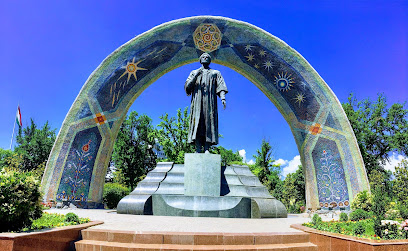
Ayni Park
Discover the beauty of Ayni Park in Dushanbe, a peaceful green oasis perfect for relaxation and cultural experiences.
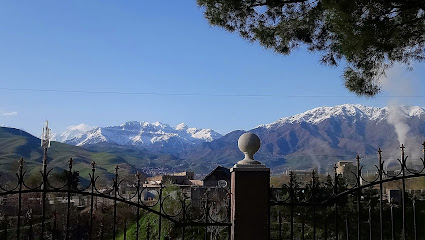
Monument of Ismail Samani
Explore the Monument of Ismail Samani in Dushanbe, a stunning tribute to Tajikistan's rich history and architectural beauty, surrounded by serene gardens.
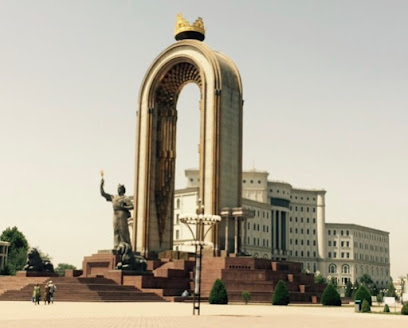
Kal'ai Mug
Explore Kal'ai Mug in Istaravshan, a historical marvel that showcases stunning architecture and rich cultural heritage in Tajikistan.
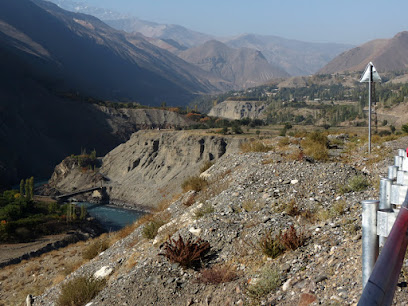
Flagpole
Discover the world's tallest flagpole in Dushanbe, a stunning symbol of Tajikistan's national pride, surrounded by vibrant city life and beautiful parks.
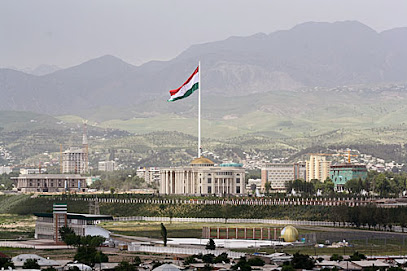
National Museum of Tajikistan
Explore the captivating history and culture of Tajikistan at the National Museum, the largest museum in Dushanbe showcasing a rich collection of artifacts.
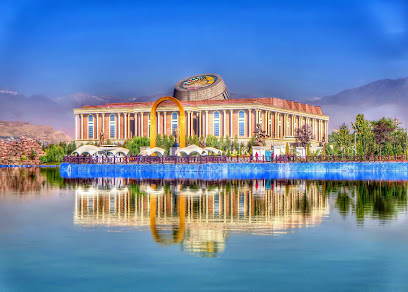
National Museum of Antiquities of Tajikistan
Discover the rich cultural heritage of Tajikistan at the National Museum of Antiquities, home to ancient artifacts and the famed statue of Buddha.
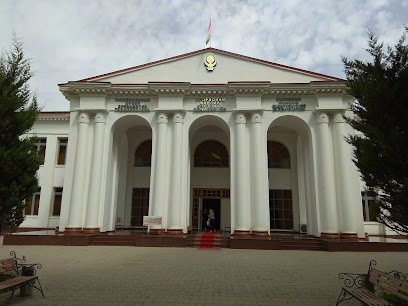
муҷассамаи Исмоили Сомонӣ
Discover the grandeur of the Ismoili Somoni Monument in Dushanbe, a historical landmark symbolizing Tajikistan's rich heritage and cultural pride.
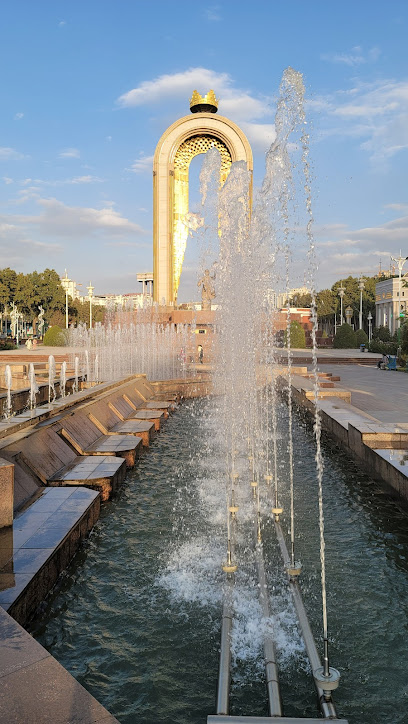
Panj-Chashma Springs
Experience the tranquility of Panj-Chashma Springs, a natural gem in Tajikistan, where crystal-clear waters and lush landscapes await.
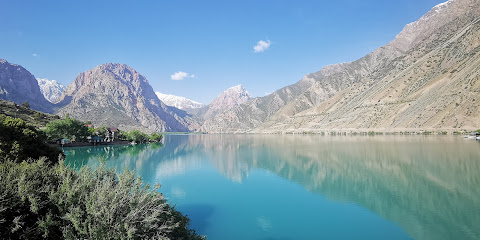
Yaghnob Valley
Discover the breathtaking beauty of Yaghnob Valley in Tajikistan—an untouched paradise of nature and culture waiting for your exploration.
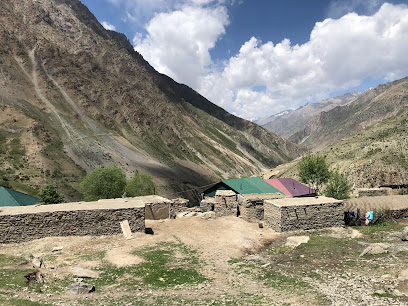
Alauddin Lake 1
Experience the serenity of Alauddin Lake, a breathtaking nature preserve in Tajikistan, perfect for hiking, picnicking, and unwinding in stunning surroundings.
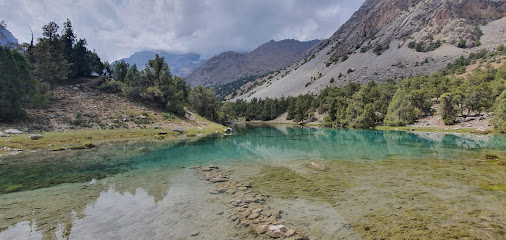
Avicenna Square
Discover tranquility at Avicenna Square in Dushanbe, Tajikistan's serene park, perfect for relaxation and cultural immersion amid lush greenery.
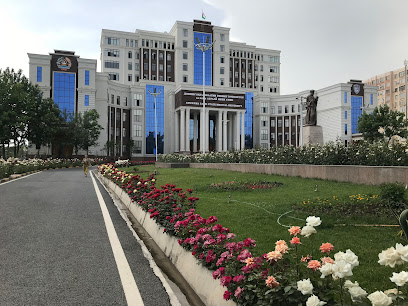
Memorial to Tajik writers
Explore the Memorial to Tajik Writers in Dushanbe, a serene tribute to Tajikistan's rich literary heritage amidst beautiful landscapes.

Adjuk
Experience the breathtaking beauty and cultural richness of Adjuk, a hidden gem in Varzob, Tajikistan. Perfect for nature lovers and adventure seekers.
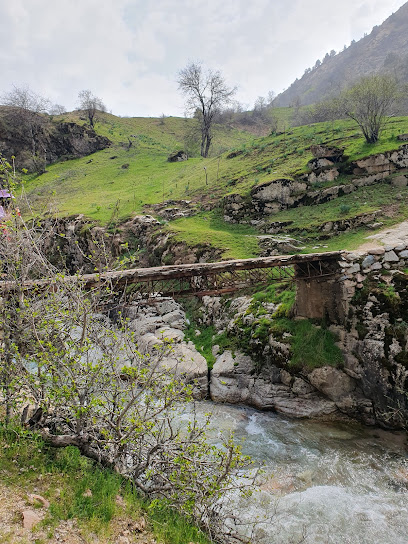
Monument to Sadriddin Aini and Maxim Gorky
Explore the stunning Monument to Sadriddin Aini and Maxim Gorky in Dushanbe, a captivating tribute to literary heritage and Tajik culture.
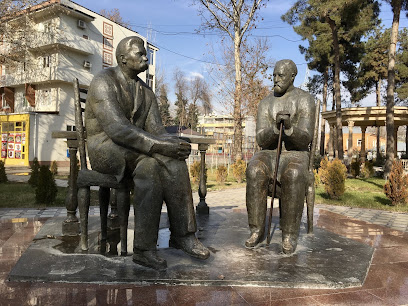
Essential places to dine
Merve Restaurant
Experience authentic Turkish cuisine at Merve Restaurant in Dushanbe—where rich flavors meet warm hospitality.
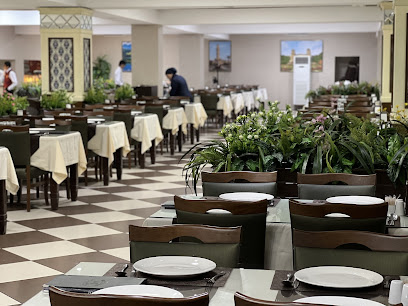
Rohat Teahouse
Discover the essence of Tajik culture at Rohat Teahouse in Dushanbe—where tradition meets tranquility.

Sayoh Restaurant
Experience authentic Tajik cuisine at Sayoh Restaurant in Dushanbe – where tradition meets flavor in a warm and inviting atmosphere.
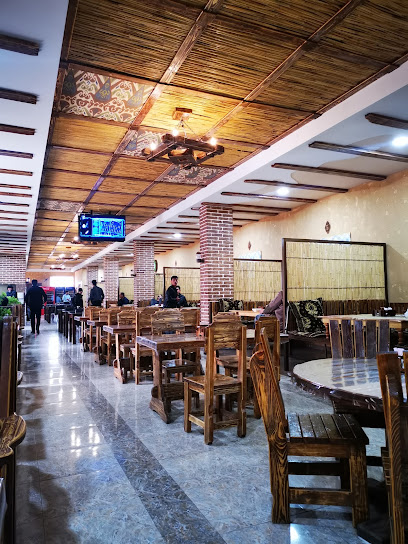
Bukhara
Experience authentic Tajik cuisine at Bukhara, where traditional flavors meet warm hospitality in Dushanbe.
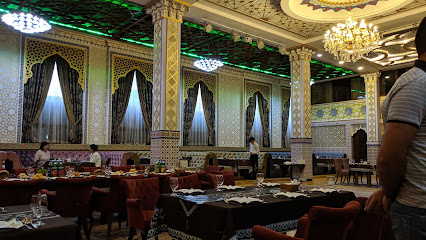
Toqi Teahouse
Discover authentic Tajik cuisine at Toqi Teahouse in Dushanbe - where tradition meets taste.
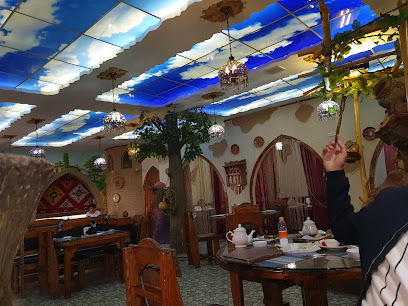
Yakkachinar Restaurant
Discover the authentic flavors of Tajikistan at Yakkachinar Restaurant in Dushanbe - where tradition meets contemporary dining.
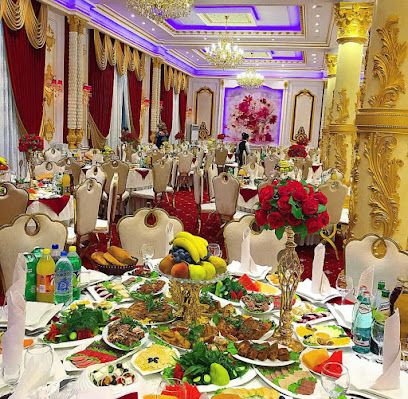
Restaurant Sharbat
Experience authentic Tajik cuisine at Restaurant Sharbat in Dushanbe - where every meal is a journey into local flavors.

Sultanbey
Discover authentic Turkish flavors at Sultanbey in Dushanbe – where culinary tradition meets modern dining.
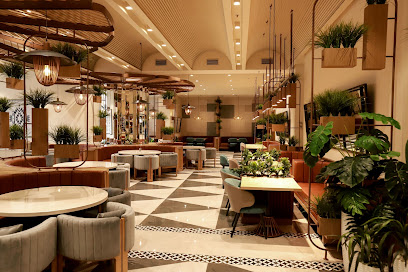
Al Sham
Discover the elegance of Middle Eastern cuisine at Al Sham in Dushanbe – where every meal is a celebration of flavor.
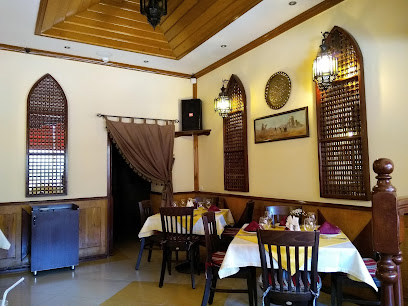
Delhi Darbar
Experience the essence of Indian cuisine at Delhi Darbar in Dushanbe - where flavors meet tradition in every dish.
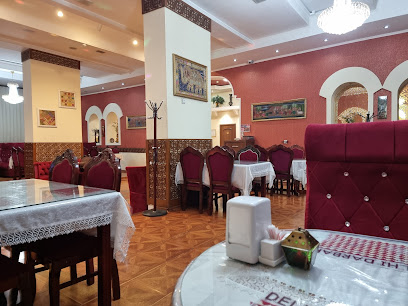
Il Patio
Discover authentic Italian flavors at Il Patio in Dushanbe - where exquisite cuisine meets cozy ambiance.
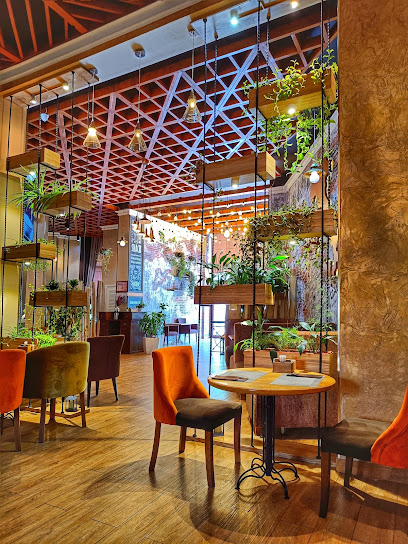
Arirang Kaya Korean restaurant
Discover the best of Korean cuisine at Arirang Kaya in Dushanbe - a must-visit destination for food lovers seeking authentic flavors.
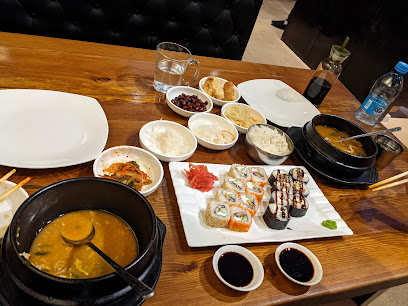
Bahori Ajam
Discover authentic Tajik cuisine at Bahori Ajam - where tradition meets flavor in the heart of Dushanbe.
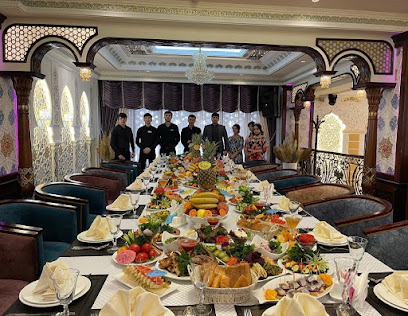
Rudaki House Restaurant
Discover authentic Tajik cuisine at Rudaki House Restaurant in Dushanbe's vibrant Rudaki Plaza—an unforgettable dining experience awaits.

Shahrisabz Restaurant
Discover the heart of Tajik cuisine at Shahrisabz Restaurant in Dushanbe—where tradition meets flavor in every dish.
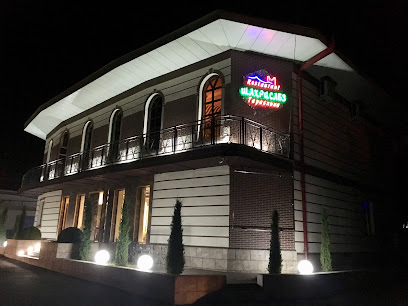
Markets, malls and hidden boutiques
Noor Art Gallery
Explore Noor Art Gallery in Dushanbe: A vibrant hub of local artistry and unique souvenirs reflecting Tajikistan's rich culture.
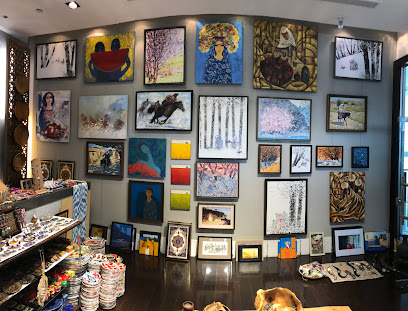
Zoda Art Gallery
Experience the vibrant art scene of Dushanbe at Zoda Art Gallery, where local creativity and unique souvenirs await every traveler.
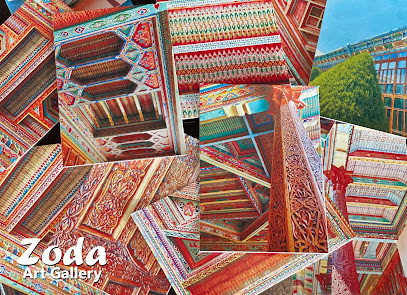
Yaghnob Valley
Discover the enchanting beauty of Yaghnob Valley, a hidden gem in Tajikistan offering stunning landscapes and rich cultural experiences.
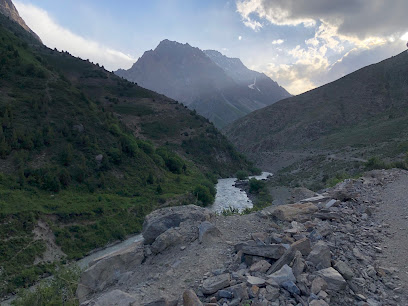
Shop ( Magoza)
Explore Magoza in Sarytag for authentic local crafts, unique souvenirs, and a taste of Tajik culture in a delightful shopping atmosphere.
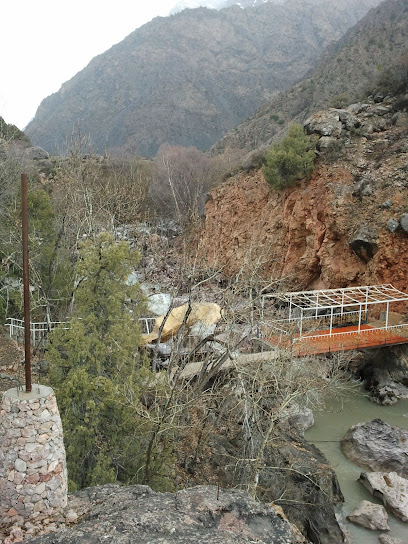
Magazin Suvenirov
Discover unique treasures at Magazin Suvenirov, your go-to gift shop in Khodzha-Obigarm for authentic Tajik souvenirs and local delicacies.

Supermarket Ikbolshokh
Experience the local flavors and vibrant culture at Supermarket Ikbolshokh in Darg, Tajikistan – your go-to spot for authentic Tajik goods.

Mini Market Ozar
Explore the charm of Veshab at Mini Market Ozar, your one-stop shop for unique home goods and local treasures in Tajikistan.

Dashtak Podshokhi Kazdun
Explore authentic Tajik crafts and culinary delights at Dashtak Podshokhi Kazdun, a charming store in the heart of Darg, Tajikistan.

Magazin Mukhammadrizo
Explore the essence of Tajikistan at Magazin Mukhammadrizo, where local craftsmanship and warmth await every visitor.

Valichon
Experience the essence of Tajikistan at Valichon, where culture meets craftsmanship in the heart of Darg.

Мағозаи хӯрокворӣ
Explore the delightful flavors of Tajikistan at Мағозаи хӯрокворӣ, a charming food store in Сарвода, offering local delicacies and authentic experiences.

Магазин Jahongir
Explore the essence of Tajik culture at Mагазин Jahongir, a must-visit store in Zasun for unique local crafts and souvenirs.

Varzob
Explore Varzob, a charming store in Deamalik, Tajikistan, where local culture meets unique shopping experiences amid stunning landscapes.

Minimarket
Explore the Minimarket in Khodzha-Obigarm for an authentic taste of Tajik culture and local delicacies, perfect for travelers seeking unique experiences.

Dukoni Gusht
Discover the authentic flavors of Tajikistan at Dukoni Gusht, a butcher shop in Anzob offering fresh meats and traditional culinary experiences.

Essential bars & hidden hideouts
Best Bar City
Discover the best of Dushanbe's nightlife at Best Bar City, where live music and vibrant energy meet for an unforgettable experience.
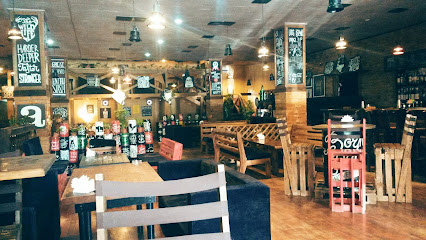
Sim Sim Pub
Experience the lively ambiance and delicious flavors at Sim Sim Pub in Dushanbe, where culinary delights meet a vibrant social scene.
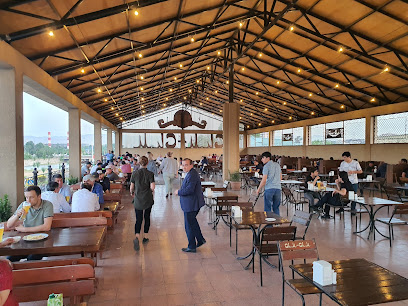
Public Pub
Experience the vibrant heart of Dushanbe at Public Pub, where local flavors and a lively atmosphere create unforgettable dining moments.

ETNO PUB
Experience the vibrant culture and nightlife of Dushanbe at ETNO PUB, a lively bar offering a unique blend of traditional and modern drinks.
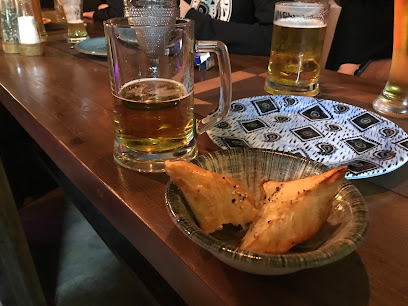
ZAVOD BAR
Discover the vibrant nightlife of Dushanbe at Zavod Bar, where drinks, music, and culture collide in an unforgettable experience.
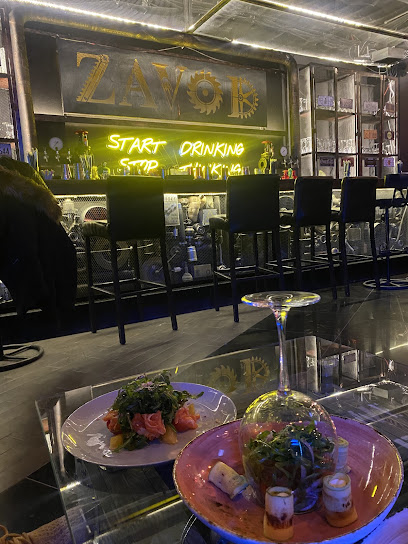
Marsal Lounge & Bar
Experience the vibrant nightlife and local flavor at Marsal Lounge & Bar in Dushanbe, where great drinks and live entertainment await.

Magic (Lounge bar)
Experience the vibrant nightlife of Vahdat at Magic Lounge Bar, where crafted cocktails and a welcoming atmosphere await.

Central Bar
Discover the vibrant nightlife of Dushanbe at Central Bar, where local culture meets refreshing drinks and lively entertainment.
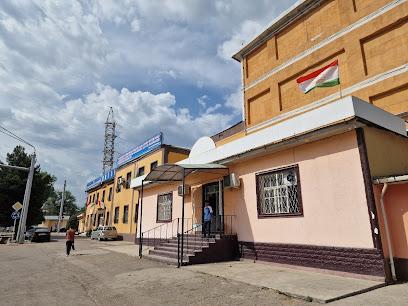
Guly's bar Khushori
Discover the charm of Guly's Bar Khushori in Pandzhkhok, where local culture meets a welcoming atmosphere for the perfect evening out.
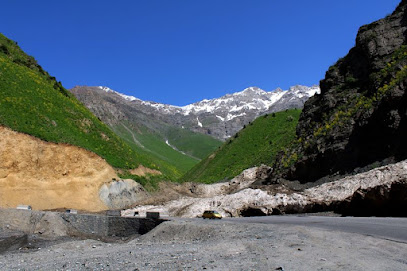
Bar Abdukakhkhor
Discover the lively Bar Abdukakhkhor in Anzob, Tajikistan, where local culture meets refreshing drinks in a vibrant setting.

Bar
Discover the lively bar scene in Sultanabad, where vibrant atmosphere meets local culture for an unforgettable night out.

Tarabkhonai Bakht
Discover the lively ambiance and refreshing drinks at Tarabkhonai Bakht, a must-visit bar in Istaravshan, Tajikistan.

Bushabi
Discover the vibrant ambiance and local flavors at Bushabi, a lively bar in Vahdat, Tajikistan, perfect for unwinding after a day of exploration.

Khayom95
Discover the charm of Khayom95, a cozy bar in Ghonchi, Tajikistan, where local flavors meet a welcoming atmosphere.

Korolevskiy
Experience the vibrant nightlife at Korolevskiy Bar in Dushanbe, where local drinks and lively atmosphere await every visitor.
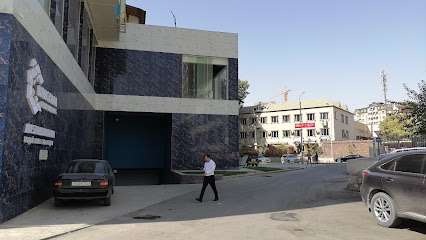
Local Phrases about Yagnob Valley
-
- HelloСалом
[Salom] - GoodbyeХайр
[Khayr] - YesҲа
[Ha] - NoНе
[Ne] - Please/You're welcomeЛутфан
[Lutfan] - Thank youРаҳмат
[Rahmat] - Excuse me/SorryБақшед
[Baqshed] - How are you?Четор ҳол доред?
[Chetor hol bored?] - Fine. And you?Хубам. Шумо четор?
[Khobam. Shumo chetor?] - Do you speak English?Шумо англисӣ гуфтан мекунед?
[Shumo anglisii guftan mekuned?] - I don't understandМан фаҳм не мекунам
[Man fahm ne mekunam]
- HelloСалом
-
- I'd like to see the menu, pleaseЛутфан менюро бегузоред
[Lutfan menyuro beguzored] - I don't eat meatМан гӯшт не хӯрокӣ
[Man gusht ne khuroki] - Cheers!Сайёҳат мубориз
[Saiyohat muboriz] - I would like to pay, pleaseЛутфан ман пардохт кардам
[Lutfan man pardokht kardam]
- I'd like to see the menu, pleaseЛутфан менюро бегузоред
-
- Help!Комак
[Komak] - Go away!Равӣ!
[Ravi!] - Call the Police!Пулисро хабар кунед!
[Pulisro habar kuned!] - Call a doctor!Духтурро хабар кунед!
[Dukhturro habar kuned!] - I'm lostМан ғаёб шудам
[Man g'ayob shudam] - I'm illМан беморам
[Man bemoram]
- Help!Комак
-
- I'd like to buy...Ман харид кардан мехоҳам
[Man harid kardan mekhojam] - I'm just lookingМан танқид менамоям
[Man tanqid menamoyam] - How much is it?Аз қадари он чӣ?
[Az qadari on chi?] - That's too expensiveОн хеле қимат аст
[On hele qimat ast] - Can you lower the price?Оё метавонед қиматро паст намоед?
[Oyo metavoned qimatro past namoed?]
- I'd like to buy...Ман харид кардан мехоҳам
-
- What time is it?Соат чанд аст?
[Soat chand ast?] - It's one o'clockСоат як буд
[Soat yak bud] - Half past (10)Ним соат (даҳ)
[Nim soat (dah)] - MorningСубҳ
[Subh] - AfternoonБегоначор
[Begonachor] - EveningШаб
[Shab] - YesterdayДирӯз
[Diruz] - TodayИмруз
[Imruz] - TomorrowПагоҳ
[Pagoh] - 1Як
[Yak] - 2Ду
[Du] - 3Се
[Se] - 4Чор
[Chor] - 5Панҷ
[Panj] - 6Шаш
[Shash] - 7Ҳафт
[Haft] - 8ҳашт
[Hasht] - 9ноҳ
[noh] - 10даҳ
[dah]
- What time is it?Соат чанд аст?
-
- Where's a/the...?Куҷост ...?
[Kujo ...?] - What's the address?Суроға чист?
[Suroga chist?] - Can you show me (on the map)?Оё метавонед менро барнамоед?
[Oyo metavoned menro barnamoed?] - When's the next (bus)?Кай саъати қадама он ҷой?
[Kay sa'ati qadama on joy?] - A ticket (to ....)Билет (ба ...)
[Bilet (ba ...)]
- Where's a/the...?Куҷост ...?
History of Yagnob Valley
-
Yagnob Valley, nestled in the towering peaks of the Fan Mountains, was once part of the ancient region of Sogdiana. This historical area flourished from the 6th century BCE to the 11th century CE. Sogdiana was a significant hub on the Silk Road, facilitating trade and cultural exchange between East and West. The inhabitants of Yagnob Valley, the Yaghnobi people, are believed to be the direct descendants of the Sogdians, preserving their ancient language and customs to this day.
-
In the 8th century, the Arab conquests began to sweep through Central Asia, including the Yagnob Valley. Despite fierce resistance, the region eventually succumbed to the Umayyad Caliphate. The Arab influence brought Islam to the valley, significantly altering its cultural and religious landscape. However, due to its remote location, Yagnob Valley retained many of its pre-Islamic traditions and Sogdian language, which continue to survive in a unique cultural blend.
-
During the late 19th and early 20th centuries, Yagnob Valley came under the influence of the Russian Empire. Following the Bolshevik Revolution in 1917, the valley was incorporated into the Soviet Union. The Soviet administration implemented policies aimed at modernizing and integrating the region, which included efforts to resettle the Yaghnobi people to the lowlands for industrial work in the 1970s. This forced displacement had a profound impact on the local culture, but many Yaghnobis eventually returned to their ancestral lands after the dissolution of the Soviet Union in 1991.
-
In recent years, there has been a renewed focus on preserving the cultural heritage of the Yaghnobi people. Efforts have been made to document and revive the Yaghnobi language and traditions. Various cultural projects and academic studies aim to safeguard this unique legacy. The Yagnob Valley has also gained attention as a destination for cultural tourism, allowing visitors to experience the rich history and traditions of the Yaghnobi people firsthand.
-
Today, Yagnob Valley stands as a testament to the resilience and enduring spirit of its people. The valley is a living museum where ancient customs and languages continue to thrive amidst breathtaking natural beauty. Modern initiatives focus on sustainable tourism and cultural preservation, ensuring that the treasures of Yagnob Valley remain accessible to future generations while protecting its unique heritage.
Yagnob Valley Essentials
-
Yagnob Valley is located in the Sughd Province of Tajikistan. The nearest major city is Dushanbe, which has an international airport, Dushanbe International Airport (DYU). From Dushanbe, you can take a shared taxi or private hire vehicle to the valley. The journey typically takes around 5 to 6 hours by road, depending on weather and road conditions. Another option is to take a domestic flight to Khujand and then travel by road to the valley, although this route is less direct.
-
Once in Yagnob Valley, transportation options are limited. The local villages are small and can often only be accessed by foot or 4WD vehicles. Many tourists prefer to hike between villages to fully appreciate the scenic beauty and cultural heritage of the area. If you prefer not to hike, arranging a local guide with a suitable vehicle is recommended. There are no public transportation options within the valley itself.
-
The official currency in Tajikistan is the Tajikistani Somoni (TJS). Cash is the preferred method of payment in Yagnob Valley, as credit cards are rarely accepted and there are no ATMs. It is advisable to withdraw sufficient cash in Dushanbe or Khujand before traveling to the valley. Small denominations are useful for everyday transactions.
-
Yagnob Valley is generally a safe destination for tourists. However, it is always wise to take standard precautions. Avoid walking alone at night, stay aware of your surroundings, and keep your belongings secure. There are no specific high-crime areas targeting tourists, but it is best to stay vigilant. Be cautious of the rugged terrain and natural hazards like landslides and sudden weather changes.
-
In case of an emergency, dial 01 for fire, 02 for police, and 03 for medical emergencies. The nearest medical facilities are in Ayni, which is several hours away by road. It is highly recommended to have comprehensive travel insurance that covers medical emergencies and evacuation. For minor health issues, carry a basic first aid kit and necessary medications, as local pharmacies are not readily available.
-
Fashion: Do dress modestly, especially in rural areas. Avoid wearing revealing clothing. Religion: Do respect local customs and traditions. The Yagnobi people are predominantly Muslim, so dress and act respectfully. Public Transport: Do be patient and respectful. There are very few public transport options, so be prepared for delays. Greetings: Do greet people with a friendly 'Salom'. A handshake is common among men, but wait for a woman to extend her hand first. Eating & Drinking: Do try local delicacies and accept food offerings graciously. Sharing meals is an important social custom.
-
To experience Yagnob Valley like a local, consider staying in a homestay to immerse yourself in the local culture. Learn a few basic phrases in Yagnobi or Tajik to communicate with locals. Visit during traditional festivals to witness unique cultural practices. Engage with local guides who can offer insights into the history and traditions of the Yagnobi people. Don't miss the opportunity to explore the ancient petroglyphs and ruins scattered throughout the valley.
Trending Landmarks in Yagnob Valley
-
Rudaki Park
-
Ayni Park
-
Monument of Ismail Samani
-
Kal'ai Mug
-
Flagpole
-
National Museum of Tajikistan
-
National Museum of Antiquities of Tajikistan
-
муҷассамаи Исмоили Сомонӣ
-
Panj-Chashma Springs
-
Yaghnob Valley
-
Alauddin Lake 1
-
Avicenna Square
-
Memorial to Tajik writers
-
Adjuk
-
Monument to Sadriddin Aini and Maxim Gorky
Nearby Cities to Yagnob Valley
-
Things To Do in Dushanbe
-
Things To Do in Istaravshan
-
Things To Do in Tursunzoda
-
Things To Do in Panjakent
-
Things To Do in Khujand
-
Things To Do in Djizak
-
Things To Do in Jizzakh
-
Things To Do in Samarkand
-
Things To Do in Shakhrisabz
-
Things To Do in Angren
-
Things To Do in Tashkent
-
Things To Do in Chirchiq
-
Things To Do in Qarshi
-
Things To Do in Namangan
-
Things To Do in Mazar-i-Sharif

